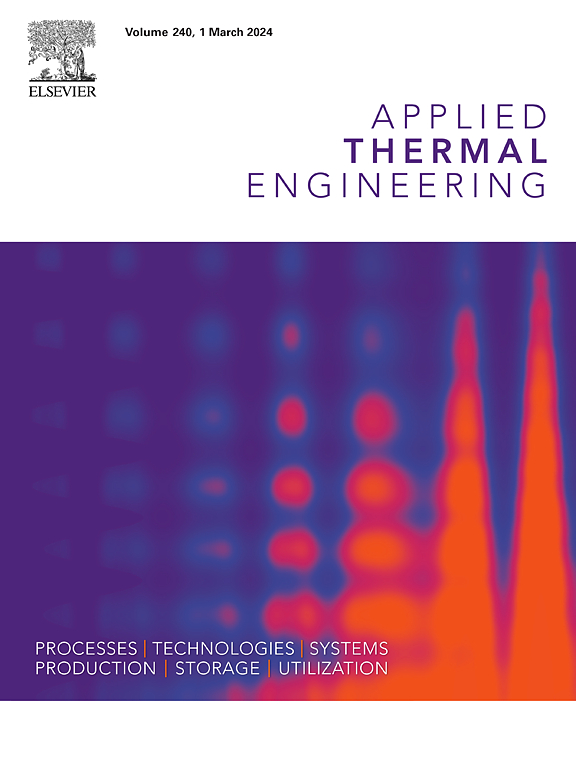Parameter analysis and multi-objective optimization of organic Rankine cycle coupled vapor compression cycle using PSO-BPNN model
IF 6.1
2区 工程技术
Q2 ENERGY & FUELS
引用次数: 0
Abstract
The accuracy of predictive models is crucial for evaluating and optimizing the performance of organic Rankine cycle combined with vapor compression refrigeration (ORC-VCR) cycles. This paper establishes a PSO-BPNN prediction model by optimizing the weight and threshold of the back-propagation neural network (BPNN) using particle swarm optimization (PSO). A small ORC-VCR device with a cooling capacity of 3 kW is constructed, and 142 steady-state experimental data are obtained for training the developed model. Then, the influence of operating parameters on the system performance is investigated. In addition, operating parameters are optimized to maximize the cooling capacity and coefficient of performance (COP). The average absolute error of PSO-BPNN model for cooling capacity and COP is about 2.2 %, which is 34 % and 46 % lower than the BPNN model. Compared with the flow rate of cooling water, its temperature has a greater impact on the system performance. The vapor compression cycle has an optimal flow rate to obtain the maximum cooling capacity and COP of the combined system. Through multi-objective optimization, the optimal cooling capacity and COP of the ORC-VCR system are 4.41 kW and 0.32, which are 32 % and 14 % higher than the maximum values observed in the experimental data.
求助全文
约1分钟内获得全文
求助全文
来源期刊

Applied Thermal Engineering
工程技术-工程:机械
CiteScore
11.30
自引率
15.60%
发文量
1474
审稿时长
57 days
期刊介绍:
Applied Thermal Engineering disseminates novel research related to the design, development and demonstration of components, devices, equipment, technologies and systems involving thermal processes for the production, storage, utilization and conservation of energy, with a focus on engineering application.
The journal publishes high-quality and high-impact Original Research Articles, Review Articles, Short Communications and Letters to the Editor on cutting-edge innovations in research, and recent advances or issues of interest to the thermal engineering community.
 求助内容:
求助内容: 应助结果提醒方式:
应助结果提醒方式:


